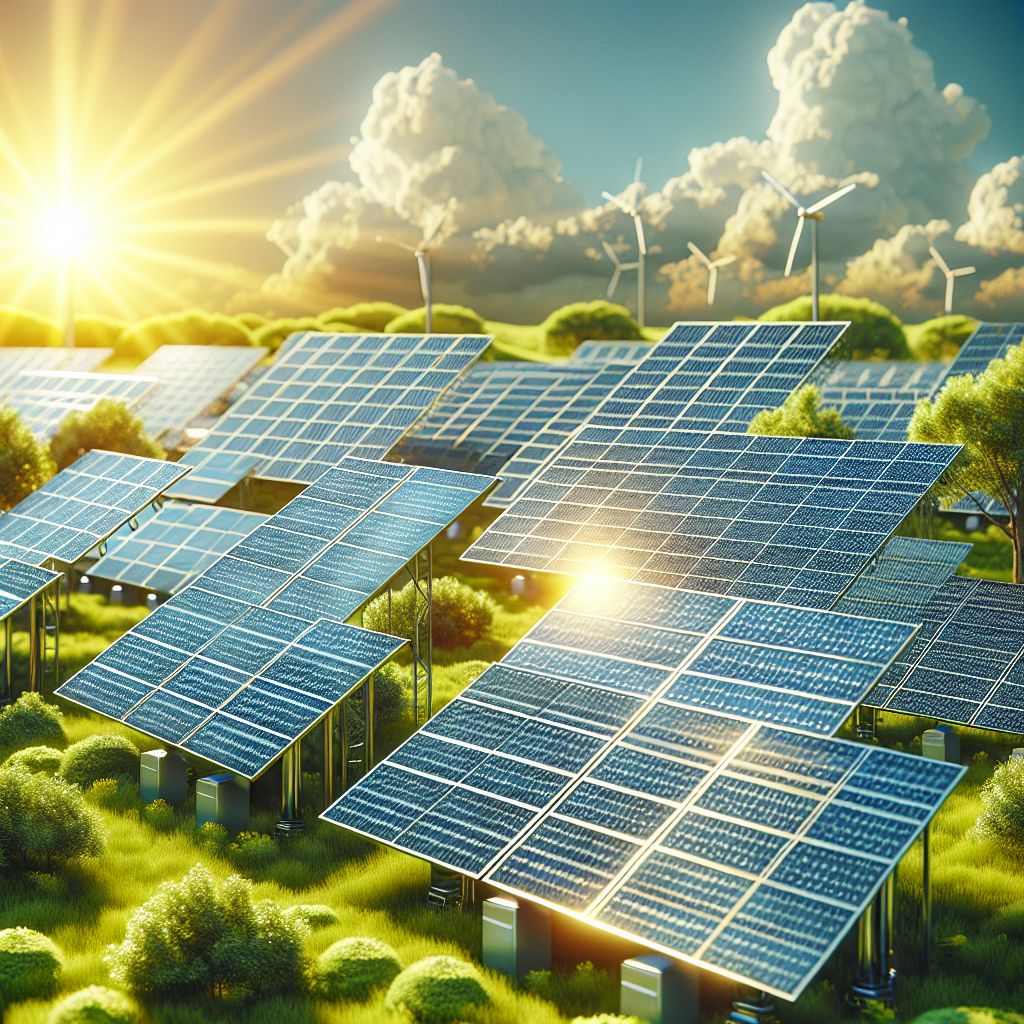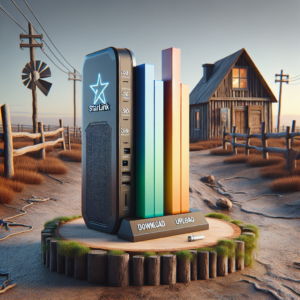
Key Takeaways
Monocrystalline solar panels are made from single-crystal silicon and are more efficient but also more expensive.
Polycrystalline solar panels are crafted from multiple silicon crystals and are less efficient but more affordable.
The choice between monocrystalline and polycrystalline solar panels depends on your budget, space, and energy needs.
Efficiency is key for maximizing energy production in limited spaces, making monocrystalline panels a preferred option.
For larger installations where space is not a constraint, polycrystalline panels can provide a more cost-effective solution.
Choosing Your Solar Ally: Monocrystalline vs. Polycrystalline
When it comes to harnessing the power of the sun, picking the right type of solar panel is crucial. You’ve probably heard about monocrystalline and polycrystalline solar panels, but what do these terms mean, and how do they affect your journey into solar energy? Let’s shed some light on the subject.
The Basics of Solar Panel Technology
Solar panels are like magic carpets that catch sunlight and turn it into electricity. They’re made up of many smaller units called solar cells, which are the true heroes in converting light into power. Now, these cells can be made in different ways, which is where monocrystalline and polycrystalline come into play.
The Significance of Cell Composition
Think of solar cells like the ingredients in a cake. Monocrystalline cells are like using pure chocolate, which can make a richer, more decadent dessert. Polycrystalline cells, on the other hand, are like using a mix of chocolates, which might not be as rich but still gets the job done. In solar terms, this means monocrystalline panels are typically more efficient, but polycrystalline panels can still provide plenty of energy.
Monocrystalline Marvels
Understanding Monocrystalline Panels
Monocrystalline solar panels are the top-tier choice for many solar enthusiasts. They’re made from silicon that’s formed into bars and cut into wafers. These panels are not only sleek and dark in color but also boast the highest efficiency rates because they’re made from the highest-grade silicon.
Benefits: Efficiency and Space
Let’s cut to the chase:
Monocrystalline panels are the go-getters of solar energy, often converting more sunlight into electricity than their polycrystalline counterparts.
This means if you’ve got a smaller roof or limited space, monocrystalline panels can squeeze out more power per square inch.
They also tend to last longer and perform better in warmer climates, which is a big win for longevity and reliability.
Considerations: Cost Implications
However, all this efficiency comes at a price, quite literally. Monocrystalline panels are generally more expensive. So, if you’re watching your wallet, you’ll need to weigh whether the higher initial cost will balance out with the energy savings over time. It’s like choosing between a high-end electric car or a more economical model – both will drive you forward, but your choice depends on your budget and preferences.
Now, let’s talk about those preferences. If you’re someone who values cutting-edge technology and wants to maximize your energy production, then investing in monocrystalline panels might be the way to go. They not only offer top-notch performance but also a sleek look that many homeowners love.
Most importantly, you need to consider the long game. Monocrystalline panels may cost more upfront, but they’re a powerhouse in efficiency, potentially offering more energy savings down the road. It’s a bit like buying a more expensive appliance that uses less electricity – over time, it could end up saving you money on your energy bills.
Understanding the difference between monocrystalline and polycrystalline solar panels is crucial for anyone considering a solar installation. Monocrystalline panels are typically more efficient and more expensive, while polycrystalline panels are more cost-effective and have a lower efficiency. Choosing the right type of solar panel can significantly impact the performance and cost of your solar energy system.
Polycrystalline Pros
Exploring Polycrystalline Panels
Now, let’s pivot to polycrystalline panels. These panels are the workhorses of the solar world. They’re created by melting multiple silicon fragments together, which gives them a distinctive mosaic-like appearance, with a blue hue. This method is less wasteful and more cost-effective, which means savings for you.
Benefits: Affordability and Accessibility
Here’s the scoop on polycrystalline panels:
They’re generally more affordable than monocrystalline panels, making solar power more accessible to a wider audience.
While they have a lower efficiency rate, they still provide a reliable source of energy for your home or business.
Polycrystalline panels are a great choice if you have ample space for installation, as you can compensate for their lower efficiency with more panels.
Considerations: Size and Efficiency
It’s not just about the price tag; size and efficiency matter too. Polycrystalline panels typically require more space to generate the same amount of power as monocrystalline panels. So, if you’re land-rich and budget-conscious, polycrystalline could be your perfect match.
Because they’re less efficient, you might need a few more polycrystalline panels to meet your energy needs compared to monocrystalline ones. It’s a trade-off that can work well if you have the room to expand your solar array.
Head-to-Head Comparison
Efficiency Battle
When it comes to efficiency, monocrystalline panels are the clear winners. With efficiency ratings between 15% to 23%, they edge out polycrystalline panels, which usually fall between 13% to 16%. This means that for every ray of sunshine, monocrystalline panels are better at turning it into electricity you can use.
Lifespan and Durability
Both types of panels are built to last, but monocrystalline panels often have a longer lifespan. They can last for 25 years or more, which is a testament to their durability. Polycrystalline panels are not far behind, though, with lifespans that are also often beyond the 20-year mark.
Aesthetic Influence
Let’s not forget about looks. Monocrystalline panels have a uniform, black appearance that many find more visually appealing. Polycrystalline panels have a bluer tone with a speckled pattern, which might not blend as seamlessly with your roof. Ultimately, the choice might come down to personal preference and how much you value the appearance of your solar setup.

Setting the Scene for Solar Success
Space Evaluation: Roof and Ground Considerations
Before you make a decision, take a good look at where you’ll be installing your solar panels. Do you have a sprawling, sun-drenched roof or a smaller, shaded one? Monocrystalline panels might be best for limited or partially shaded spaces, while polycrystalline panels could work well if you’ve got space to spare.
Weather Watch: Climate’s Role in Panel Performance
Your local climate plays a big role in your solar panel performance. Hotter climates can reduce the efficiency of solar panels, but monocrystalline panels tend to handle the heat better. If you live in an area with high temperatures, this might tip the scales in favor of monocrystalline.
But, if your region is cooler or you get less intense sunlight, polycrystalline panels can still perform admirably and at a lower cost. It’s all about finding the right fit for your environment.
Balancing the Budget: Cost vs. Long-Term Savings
Now, let’s talk turkey. Budgeting for solar panels isn’t just about the upfront costs; you need to consider the long-term savings too. Monocrystalline panels might have a higher initial price, but their efficiency can lead to greater savings over time. Polycrystalline panels, with their lower upfront cost, can still be a smart investment, especially if you can install more of them.
Therefore, crunch the numbers and think about your energy consumption. How much power do you need, and how quickly do you want to recoup your investment? These are crucial questions that will help guide your decision.
Commercial Energy Considerations
When it comes to commercial installations, the decision between monocrystalline and polycrystalline solar panels is often driven by two factors: the available installation space and the long-term energy cost savings. Large commercial buildings often have ample roof space, allowing for the more economical polycrystalline panels to be used without compromising on the total energy output. However, businesses that prioritize a quick return on investment and maximum efficiency might lean towards monocrystalline panels despite the higher initial costs.
The Power of Portables: Camping and Outdoors Usage
For those who love to hit the road or the trails, portable solar panels offer the freedom to generate power wherever the sun shines. In this arena, monocrystalline panels are often the preferred choice due to their higher efficiency and lighter weight, which is important when you’re on the move. They can charge devices more quickly and are ideal for those who need reliable power in remote locations.
Frequently Asked Questions (FAQ)
What’s the Difference in Lifespan Between Monocrystalline and Polycrystalline Panels?
Both monocrystalline and polycrystalline solar panels are designed for longevity, typically lasting 25 to 30 years. However, monocrystalline panels often have a slight edge in lifespan due to the high-purity silicon used in their production, which can withstand the elements better over time.
Can Polycrystalline Panels Perform Well in Low-Light Conditions?
Polycrystalline panels have improved significantly over the years, and while they are generally less efficient than monocrystalline panels, they can still perform adequately in low-light conditions. However, monocrystalline panels will often provide better performance in these scenarios due to their superior ability to capture light.
How Do Aesthetics Influence the Choice Between Monocrystalline and Polycrystalline?
The sleek, black appearance of monocrystalline panels is often considered more aesthetically pleasing and can blend in better with a variety of roofing materials. Polycrystalline panels have a distinct blue hue that might not be as universally appealing. For homeowners concerned about curb appeal, the look of monocrystalline panels might be the deciding factor.
What Should I Consider When Choosing Between Monocrystalline and Polycrystalline for a Small Home?
For smaller homes with limited roof space, maximizing energy production is key. Monocrystalline panels, with their higher efficiency, can generate more electricity in a smaller area, making them an excellent choice for such homes. However, if budget constraints are a significant concern, polycrystalline panels can still be a viable option, especially if you can accommodate a few extra panels.
Are There Specific Scenarios Where Polycrystalline Panels Are Preferred Over Monocrystalline?
Yes, there are scenarios where polycrystalline panels might be the preferred choice. For instance:
Large-scale installations where space is not a constraint, and the goal is to minimize costs.
Areas with cooler climates where the slightly lower efficiency of polycrystalline panels is less of an issue.
Installations where the panels are not highly visible, and aesthetics are not a primary concern.
In conclusion, the choice between monocrystalline and polycrystalline solar panels is not one-size-fits-all. It requires a thoughtful consideration of your specific needs, budget, and installation conditions. By understanding the strengths and limitations of each type of panel, you can make an informed decision that aligns with your energy goals and paves the way for a greener, more sustainable future. Whether you opt for the high-efficiency monocrystalline panels or the cost-effective polycrystalline option, you’re taking a significant step towards energy independence and contributing to a healthier planet.







